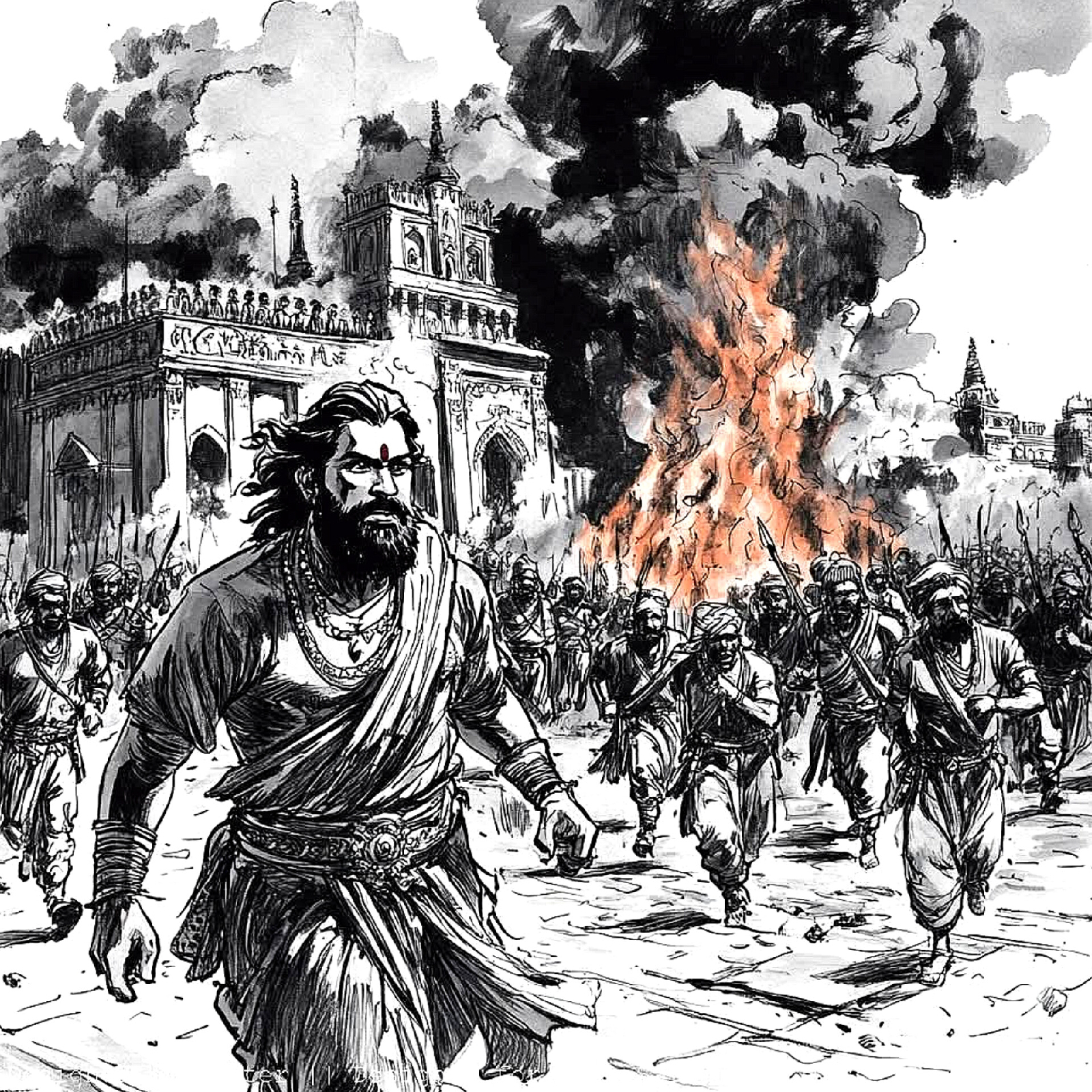The Hambir Mahattmya - Translated

Hambira Mahattmya Rangiṇī raṇajayī, dundubhi bājai, The war-drum thundereth, the kettledrum resounds; Raṇaghor bājai dāmāmā. The field of strife with clamour loud abounds. Bāṅghālī majbūt, jaicchan Yamadūt, The stalwart Bāṅghālī, like messengers of Yama bold, Samayut yujhe khānsāmā. With even might the khānsāmā their stand uphold. Dādālī dalbal, mahī mājhe mātal, The dādālī hosts in frenzy ‘midst the earth do flame, Mānava mahime mahādamphe. In mortal glory swelling, proud in name. Dharadhar bale ghana, dhāi̱che dhānāgaṇa, “Dharadhar!” roareth thick, the ranks in haste advance, Dhamke dharadhar kampe. Earth quaketh, shuddering ‘neath their martial dance. T abu to akātara, nṛpati laṣkara, Yet undismay’d the monarch’s hosts abide, Duṣkara samarera mājhe. Though perilous the strife where foemen chide. Jhaṭpaṭī choṭpāṭ, bahiche hāna kāṭ, Swift blows and strokes resound in furious showers, Hām̐bīrā mār m...





